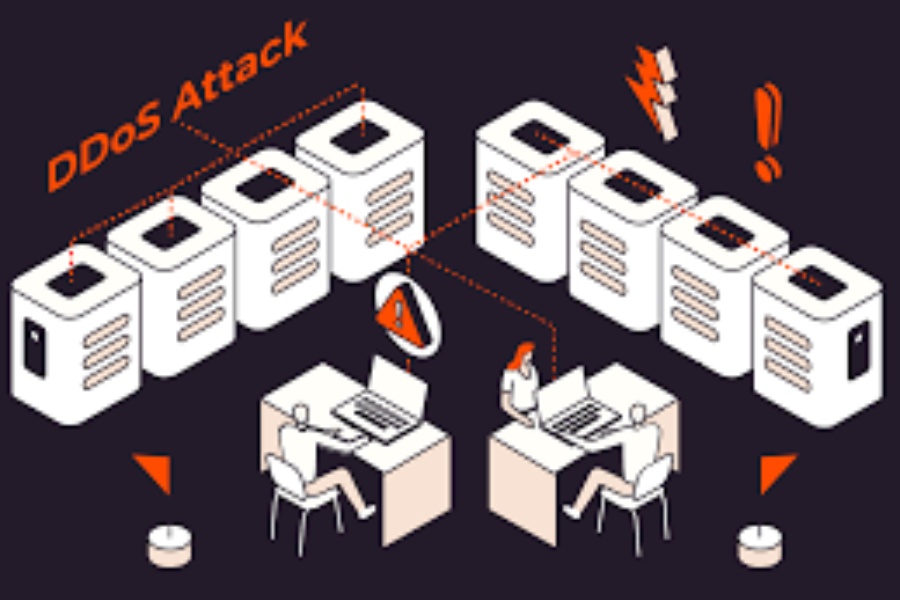Key Takeaways
- Understanding the basic mechanisms of DDoS attacks and their impact on businesses.
- Exploring effective strategies and technologies for mitigating these attacks.
- Staying ahead with up-to-date knowledge and resources to protect business assets.
Introduction to DDoS Attacks
Distributed Denial of Service (DDoS) attacks are a severe concern for modern businesses. These attacks flood a network, service, or server with traffic, rendering it inaccessible. For organizations, investing in a reliable DDOS migration service can be a critical step in defending against these threats. Due to their increasing complexity and frequency, any company must comprehend and take preventative measures against these threats.
A robust DDoS defense strategy is not a luxury but a necessity. Businesses must stay informed and adopt comprehensive measures to protect their assets and maintain continuity. Effective DDoS mitigation involves a combination of proactive measures and reactive strategies to minimize damage and recovery time. Because of the increasing reliance on digital platforms, an attack might cause significant financial and reputational harm if mismanaged.
DDoS Attack Types
DDoS assaults can take many different forms, and each has unique qualities. The three primary types are:
- Volumetric Attacks: These attacks aim to overwhelm the target’s bandwidth with massive data. Attackers use botnets to send high volumes of traffic, clogging the network. Due to the difficulty separating malicious from routine communications, this kind of attack is incredibly successful.
- Protocol Attacks: These attacks exploit weaknesses in network protocol stacks to disrupt services. Techniques like SYN Floods and Ping of Death are standard, taking advantage of protocol vulnerabilities to exhaust server resources and make the network unavailable to legitimate users.
- Application Layer Attacks: These attacks target specific applications to exhaust resources. By simulating legitimate user behavior, but at a massive scale, these attacks can be harder to detect. Examples focus on the layers where web pages are created on the server and sent in response to HTTP requests; examples include HTTP floods and slow-rate assaults.
Real-World Impact on Businesses
The effects of DDoS attacks on businesses can be devastating. Prolonged downtime, loss of customer trust, and significant financial loss are expected consequences. For example, according to recent studies, the average cost of a DDoS attack on a business can exceed $2 million. These attacks do not only affect the target company but can also disrupt the digital ecosystem connected to it, causing a ripple effect in the market.
Moreover, the reputational damage can be profound. Customers lose trust in businesses that cannot guarantee secure and stable services. This lack of faith may result in long-term revenue losses and a decline in client retention. In sectors such as finance and healthcare, where data security is paramount, the impact of a DDoS attack can be even more severe, potentially violating regulations and leading to substantial fines.
Technologies for DDoS Mitigation
A range of technologies can help mitigate DDoS attacks. Among these, the most effective solutions include:
- Web Application Firewalls (WAFs): These provide an essential line of defense by filtering malicious traffic. WAFs analyze incoming traffic and block potentially harmful requests before they can reach the server. Advanced WAFs continuously learn and adapt to recognize new attack patterns.
- Content Delivery Networks (CDNs) distribute traffic across multiple servers to lessen the impact. By distributing the load over several servers globally, content delivery networks (CDNs) make it more difficult for a DDoS attacker to knock down a service.
- Anti-DoS Software: This software automatically detects and blocks suspicious activities. By analyzing traffic in real-time, anti-DDoS software can dynamically respond to threats by rerouting or dropping malicious traffic. It also provides the analytics needed to understand the nature and source of the attacks, allowing for improved future defenses.
Best Practices for Businesses
Implementing best practices is vital for reducing the risk of a DDoS attack. These practices include regular infrastructure audits, employee training on cyber threats, and robust incident response plans. Additionally, keeping software and systems updated can prevent many vulnerabilities.
Businesses should also consider building a comprehensive incident response plan that includes detailed steps for detecting, containing, and recovering from DDoS attacks. Regular drills and simulations can ensure that everyone in the organization is prepared and knows their role in the event of an attack. Incorporating redundancy and fail-over mechanisms can also help maintain operations during an attack.
Continuous Monitoring and Maintenance
Ongoing monitoring and maintenance are crucial for fortifying a defense against DDoS attacks. Tools that provide real-time analytics and automated alerts can help businesses respond swiftly to potential threats. Consistent network performance reviews ensure that anomalies are detected early, mitigating damages.
Furthermore, collaborating with third-party security experts for regular assessments can uncover potential vulnerabilities internal teams may overlook. Utilizing sophisticated security information and event management (SIEM) systems may offer a comprehensive network perspective, improving the capacity to identify and counter intricate attack pathways.
Future Trends in DDoS Protection
As DDoS attacks evolve, so do the strategies and technologies to counter them. Artificial intelligence and machine learning innovations pave the way for more proactive and predictive defenses. AI-driven systems can analyze vast amounts of network traffic data to identify unusual patterns and predict potential attacks before they happen. Moreover, these systems can automate responses, reducing the time it takes to mitigate threats.
Additionally, collaborations and information sharing among organizations are becoming increasingly important to develop collective resilience against cyber threats. Industry alliances and security communities provide platforms for sharing attack data, threat intelligence, and best practices, collectively enhancing the security posture of all members.
Keep an eye for more news & updates on TimesAnalysis.Com!



